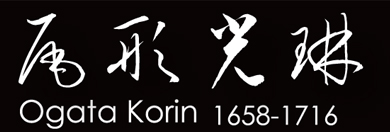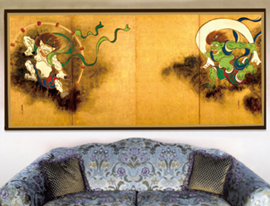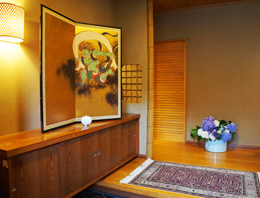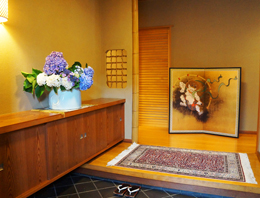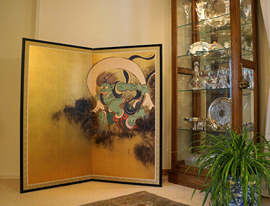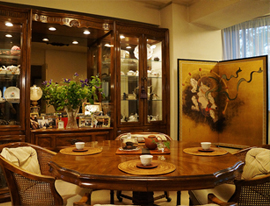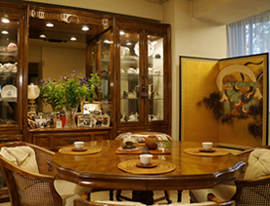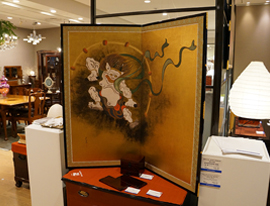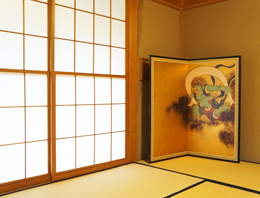尾形光琳は、後代に「琳派」と呼ばれる装飾的大画面を得意とした画派を生み出した始祖であり、江戸時代中期を代表する画家のひとりである。主に京都の富裕な町衆を顧客とし、王朝時代の古典を学びつつ、明快で装飾的な作品を残した。その非凡な意匠感覚は「光琳模様」という言葉を生み、現代に至るまで日本の絵画、工芸、意匠などに与えた影響は大きい。画風は大和絵風を基調にしつつ、晩年には水墨画の作品もある。大画面の屏風のほか、香包、扇面、団扇などの小品も手掛け、手描きの小袖、蒔絵などの作品もある。また、実弟の尾形乾山の作った陶器に光琳が絵付けをするなど、その制作活動は多岐にわたっている。
The founder of what later became known as the Rinpa school (a group of artists who excelled in drawing large-size ornamental paintings), Ogata Korin was a leading artist of Japan’s mid-Edo period. His clients were most wealthy merchants from Kyoto. Having studied the classical artwork of the Heian period, Korin left many works of art that are both clear in style and ornamental in design. His unique sense of design yielded the expression “Korin patterns,” and such patterns continue to have a significant influence on Japanese art, craftwork and design even today. Although his style of painting was based on the Japanese-style paintings of the Heian period, he also drew Chinese-style ink paintings in his later years. In addition to large-size folding screen paintings, he left small paintings executed on incense bags and fans (both folding and round) as well as hand-drawn designs on kimonos and lacquer paintings. Korin's creative activities covered a wide range of areas, including creating paintings on pottery produced by Ogata Kenzan, his biological brother.



